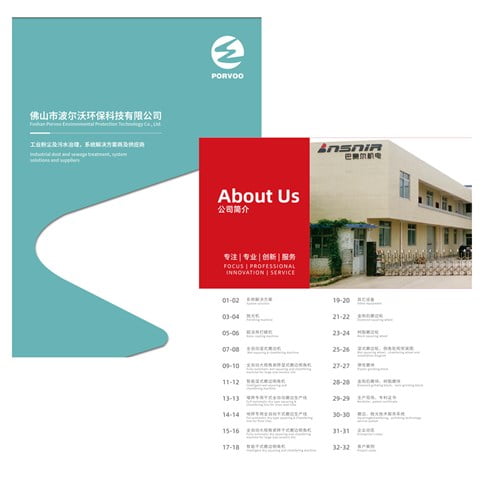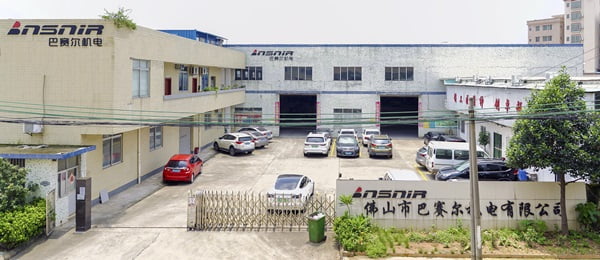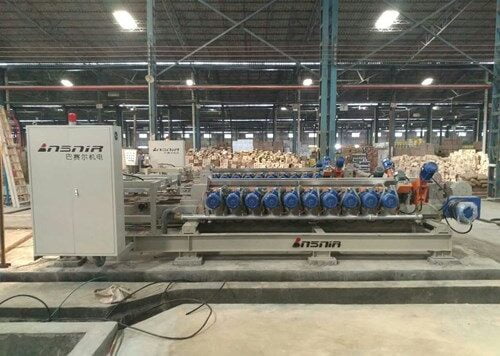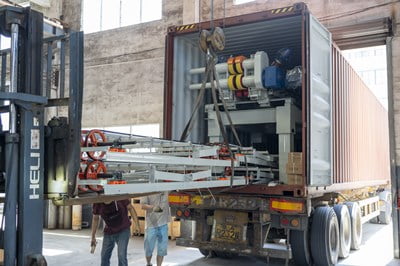In the world of ceramic and porcelain tile production, achieving perfection is not just a goal; it's a necessity. At the heart of this precision lies a remarkable tool: the diamond squaring wheel. This unsung hero of the tile industry plays a crucial role in creating the flawless edges we often take for granted in our homes and public spaces.
The diamond squaring wheel is a specialized abrasive tool designed to bring uniformity and precision to tile edges. Covered with diamond particles bonded to the wheel's surface, these tools are the secret behind the smooth, square edges of high-quality tiles. As we delve deeper into the world of diamond squaring wheels, we'll uncover their intricate workings, applications, and the transformative impact they have on tile production.
From the bonding methods that hold diamond particles in place to the various grit sizes that determine the final finish, diamond squaring wheels are marvels of engineering. They not only correct tile edges but also ensure dimensional accuracy, minimize diagonal differences, and contribute to the overall aesthetic appeal of tiles. Whether you're a tile manufacturer, a construction professional, or simply curious about the technology behind everyday objects, understanding diamond squaring wheels opens up a fascinating world of precision and craftsmanship.
As we embark on this exploration, we'll unravel the complexities of diamond squaring wheels, examining their construction, operation, and the critical role they play in the tile production process. Get ready to discover how these remarkable tools are shaping the future of tile manufacturing, one perfectly squared edge at a time.
"Diamond squaring wheels are the cornerstone of precision in tile production, transforming rough-cut tiles into perfectly squared masterpieces ready for installation."
What Makes Diamond Squaring Wheels Unique?
At the core of diamond squaring wheels lies their distinctive composition and design. These specialized tools are not your average grinding wheels; they are precision-engineered instruments designed to meet the exacting demands of tile production.
Diamond squaring wheels stand out due to their diamond-coated surface, which provides unparalleled abrasive power. The diamond particles, known for their hardness and durability, are securely bonded to the wheel's surface using either metal or resin bonds. This combination of diamond abrasives and carefully chosen bonding materials results in a tool that can consistently deliver high-quality, precise cuts on even the hardest ceramic and porcelain tiles.
The unique properties of diamond squaring wheels make them indispensable in tile manufacturing. They offer superior grinding performance, extended tool life, and the ability to produce exceptionally smooth and square tile edges. These qualities not only enhance the final product's appearance but also contribute to easier and more precise tile installation.
"The diamond-coated surface of squaring wheels, combined with advanced bonding techniques, creates a tool that consistently delivers precision and quality in tile edge finishing."
| Feature | Metal Bond | Resin Bond |
|---|---|---|
| Hardness | High | Moderate |
| Wear Resistance | Excellent | Good |
| Finish Quality | Good | Excellent |
| Heat Resistance | High | Moderate |
| Application | Rough Grinding | Fine Finishing |
How Do Diamond Squaring Wheels Transform Tile Edges?
The transformation of tile edges from rough-cut to perfectly squared is a process that showcases the remarkable capabilities of diamond squaring wheels. These tools operate on a principle of precision abrasion, where the diamond particles on the wheel's surface systematically remove material from the tile edge.
As the tile moves against the rotating diamond squaring wheel, the abrasive action of the diamond particles grinds away imperfections and excess material. This process is carefully controlled, with factors such as wheel speed, feed rate, and pressure finely tuned to achieve the desired result. The diamond particles work to create a smooth, even surface while simultaneously ensuring the edge is perfectly square in relation to the tile's face.
The transformation process isn't just about aesthetics; it's about creating tiles that fit together seamlessly during installation. By ensuring each edge is perfectly square and smooth, diamond squaring wheels contribute to the overall quality and durability of tiled surfaces.
"The precision of diamond squaring wheels allows for the creation of tiles with edges so perfectly squared and smooth that they fit together with minimal visible seams, enhancing the overall aesthetic of tiled surfaces."
| Process Stage | Grit Size | Purpose |
|---|---|---|
| Rough Grinding | 60-80 | Initial shaping and squaring |
| Medium Grinding | 100-120 | Refining shape and removing rough marks |
| Fine Grinding | 150-180 | Smoothing and preparing for polishing |
| Polishing | 220+ | Achieving final smooth finish |
Why Are Bonding Methods Crucial in Diamond Squaring Wheels?
The bonding method used in diamond squaring wheels is a critical factor that significantly influences their performance and application. Two primary bonding methods are employed: metal bonding and resin bonding. Each method has its unique characteristics and advantages, making them suitable for different stages of the tile edge finishing process.
Metal bonding, typically using a mixture of copper powder and diamond powder, creates a wheel with high hardness and excellent wear resistance. These qualities make metal-bonded wheels ideal for rough grinding and working with extremely hard materials. However, the trade-off is that they may leave slight wear marks on the tile edge.
On the other hand, resin bonding uses a combination of resin material and diamond powder. Resin-bonded wheels are known for producing a smoother finish and are often used in the final stages of edge finishing. While they may not be as hard or wear-resistant as metal-bonded wheels, they excel in creating a polished, high-quality edge.
The choice between metal and resin bonding depends on factors such as the tile material, the stage of the finishing process, and the desired end result. Understanding these bonding methods is crucial for optimizing the tile production process and achieving the best possible edge quality.
"The bonding method in diamond squaring wheels is not just about holding diamond particles in place; it's a strategic choice that balances hardness, wear resistance, and finish quality to meet specific tile production needs."
| Bonding Method | Advantages | Best For |
|---|---|---|
| Metal Bond | High durability, Excellent for hard materials | Rough grinding, High-volume production |
| Resin Bond | Smooth finish, Less heat generation | Fine finishing, Polishing, Delicate materials |
What Role Do Grit Sizes Play in Diamond Squaring Wheels?
Grit size is a fundamental aspect of diamond squaring wheels that plays a crucial role in determining the final quality and characteristics of tile edges. The grit size refers to the size of the diamond particles bonded to the wheel's surface, and it directly impacts the wheel's cutting ability and the finish it produces.
Diamond squaring wheels come in a wide range of grit sizes, typically from coarse (e.g., 60 grit) to very fine (e.g., 3000 grit and above). Coarser grits are used for initial shaping and removal of large imperfections, while finer grits are employed for smoothing and polishing the edge to achieve the desired finish.
The selection of grit size is not arbitrary; it's a carefully considered decision based on factors such as the tile material, the stage of the finishing process, and the desired end result. A typical tile edge finishing process might start with a coarse grit for initial shaping, progress through medium grits for refining, and finish with fine grits for polishing.
Understanding and properly utilizing different grit sizes allows tile manufacturers to achieve precise control over the edge finishing process, ensuring consistent quality and meeting specific aesthetic requirements.
"The grit size of diamond squaring wheels is the key to achieving the perfect balance between efficient material removal and desired surface finish, allowing for precise control over the tile edge quality."
| Grit Range | Classification | Typical Use |
|---|---|---|
| 60-100 | Coarse | Initial shaping, Heavy material removal |
| 120-220 | Medium | Edge refinement, Preparing for polishing |
| 240-600 | Fine | Smoothing, Initial polishing |
| 800+ | Ultra-fine | High-gloss polishing, Final finish |
How Do Diamond Squaring Wheels Enhance Tile Installation?
The impact of diamond squaring wheels extends far beyond the manufacturing process; these tools play a crucial role in enhancing tile installation. By creating perfectly squared and smooth edges, these wheels contribute significantly to the ease and quality of tile laying.
When tiles have precisely squared edges, they fit together more seamlessly during installation. This precision reduces the visibility of grout lines and minimizes the risk of lippage – the uneven surface created when adjacent tiles are not perfectly aligned. The result is a more aesthetically pleasing and professional-looking tiled surface.
Moreover, the smooth edges produced by diamond squaring wheels make the tiling process more efficient. Installers can work more quickly and confidently, knowing that each tile will fit snugly against its neighbors without gaps or irregularities. This efficiency can lead to faster project completion times and reduced labor costs.
The enhanced installation quality also contributes to the longevity of tiled surfaces. Properly squared tiles are less likely to chip or crack at the edges, and the even surface they create is easier to clean and maintain over time.
"Diamond squaring wheels are not just manufacturing tools; they are the unsung heroes of tile installation, creating edges so precise that they elevate the entire tiling process from laying to long-term maintenance."
| Benefit | Impact on Installation | Long-term Effect |
|---|---|---|
| Perfect Squareness | Easier alignment, Reduced lippage | Enhanced aesthetic appeal |
| Smooth Edges | Faster installation, Tighter fits | Improved durability, Easier cleaning |
| Consistent Quality | Predictable results, Fewer rejects | Higher customer satisfaction |
Can Diamond Squaring Wheels Adapt to Different Tile Materials?
One of the most impressive aspects of diamond squaring wheels is their versatility in handling various tile materials. From soft ceramics to ultra-hard porcelains, these wheels can be customized to effectively process a wide range of tile types.
The adaptability of diamond squaring wheels lies in their design flexibility. Manufacturers can adjust factors such as diamond concentration, bond hardness, and grit size to create wheels optimized for specific materials. For instance, wheels designed for hard porcelain tiles might feature a higher diamond concentration and a more durable bond, while those for softer ceramics might use a less aggressive configuration.
This adaptability extends to tiles with different water absorption rates, surface textures, and even decorative features. By fine-tuning the wheel specifications, manufacturers can ensure optimal performance across diverse tile product lines without compromising on edge quality or production efficiency.
Furthermore, the ability of diamond squaring wheels to adapt to different materials allows tile manufacturers to maintain consistency across their product range. Whether producing budget-friendly ceramic tiles or high-end porcelain slabs, manufacturers can achieve the same level of edge precision and quality.
"The adaptability of diamond squaring wheels to various tile materials is a testament to their engineering sophistication, enabling consistent quality across diverse product lines and revolutionizing the tile manufacturing industry."
| Tile Type | Recommended Wheel Features | Benefits |
|---|---|---|
| Soft Ceramic | Lower diamond concentration, Softer bond | Prevents chipping, Smooth finish |
| Hard Porcelain | Higher diamond concentration, Harder bond | Efficient material removal, Durability |
| Textured Tiles | Specific grit pattern, Flexible bond | Preserves surface texture, Even edge |
| Large Format Tiles | Wider wheel, Balanced diamond distribution | Consistent edge quality, Reduced processing time |
What Does the Future Hold for Diamond Squaring Wheel Technology?
As we look to the future, the evolution of diamond squaring wheel technology promises exciting advancements in tile manufacturing. Innovations in materials science, engineering, and manufacturing processes are paving the way for even more efficient, precise, and versatile tools.
One area of development is in the realm of diamond synthesis and bonding technologies. Advanced methods for creating and attaching synthetic diamonds to wheels could lead to tools with even longer lifespans and more consistent performance. Additionally, research into new bonding materials could result in wheels that combine the durability of metal bonds with the smooth finish of resin bonds.
Another frontier is the integration of smart technologies into diamond squaring wheels. Sensors embedded in the wheels could provide real-time data on wear, temperature, and performance, allowing for predictive maintenance and optimal usage. This could significantly reduce downtime and improve overall manufacturing efficiency.
Environmental considerations are also driving innovation. Future diamond squaring wheels may incorporate more sustainable materials and manufacturing processes, aligning with the growing demand for eco-friendly production methods in the tile industry.
As tile designs become more complex and materials more diverse, we can expect to see diamond squaring wheels that are even more adaptable and capable of handling intricate edge profiles and unique surface textures.
"The future of diamond squaring wheel technology is not just about incremental improvements; it's about reimagining the possibilities of tile edge finishing, pushing the boundaries of precision, efficiency, and sustainability in tile manufacturing."
| Future Trend | Potential Impact | Industry Benefit |
|---|---|---|
| Smart Sensors | Real-time performance monitoring | Improved efficiency, Reduced downtime |
| Advanced Materials | Longer tool life, Better finish quality | Cost savings, Higher product quality |
| Eco-friendly Designs | Reduced environmental impact | Sustainability, Market differentiation |
| Adaptive Technology | Handling diverse tile designs | Increased versatility, New design possibilities |
In conclusion, diamond squaring wheels stand as a testament to the ingenuity and precision engineering that drives the tile manufacturing industry forward. From their unique composition to their adaptability across various materials, these tools have revolutionized the way we approach tile edge finishing. The perfect squareness and smooth edges they produce not only enhance the aesthetic appeal of tiles but also significantly improve installation quality and long-term durability.
As we've explored, the science behind diamond squaring wheels is complex, involving careful consideration of bonding methods, grit sizes, and material properties. Yet, it's this complexity that allows for such versatility and precision in tile production. The ability of these wheels to adapt to different tile materials while maintaining consistent quality is truly remarkable.
Looking to the future, the potential for innovation in diamond squaring wheel technology is vast. From smart, sensor-equipped wheels to more sustainable designs, the evolution of these tools promises to bring even greater efficiency and quality to tile manufacturing.
For those in the tile industry or related fields, staying informed about advancements in diamond squaring wheel technology is crucial. These tools are not just manufacturing components; they are key drivers of quality and innovation in tile production. As the industry continues to evolve, diamond squaring wheels will undoubtedly play a central role in shaping the future of tile manufacturing and installation.
For more information on cutting-edge diamond squaring wheels and their applications, visit 'BASAIR', a leader in precision tile manufacturing tools. Their expertise and innovative products are helping to drive the industry forward, ensuring that the tiles we use in our homes and public spaces are of the highest quality possible.












